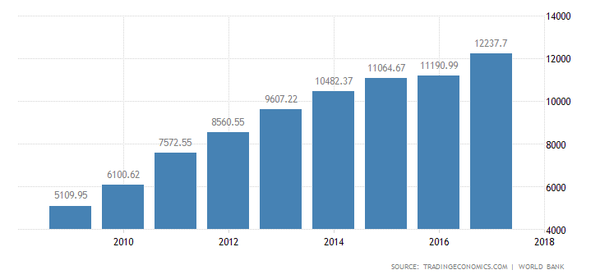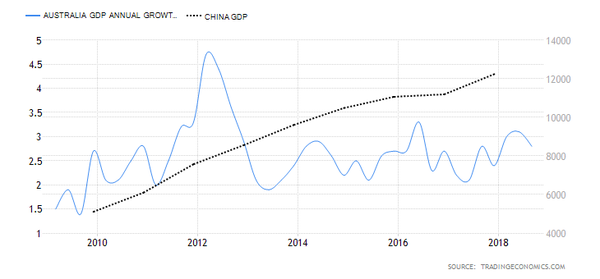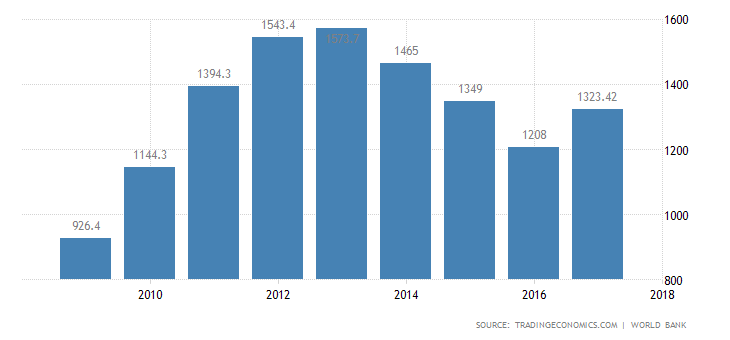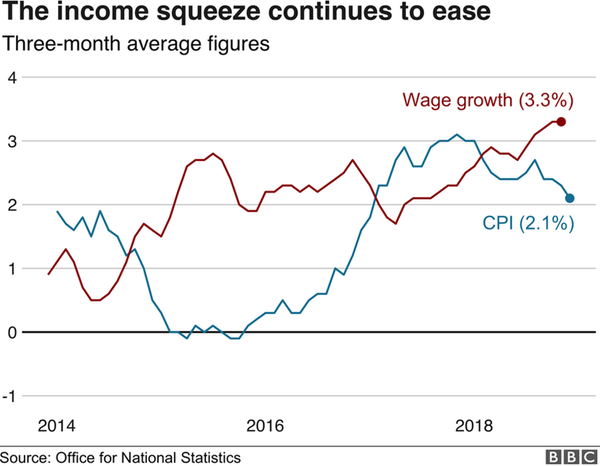Sentiment does a 180 on Chinese GDP
Published 23-JAN-2019 11:31 A.M.
|
2 minute read
Hey! Looks like you have stumbled on the section of our website where we have archived articles from our old business model.
In 2019 the original founding team returned to run Next Investors, we changed our business model to only write about stocks we carefully research and are invested in for the long term.
The below articles were written under our previous business model. We have kept these articles online here for your reference.
Our new mission is to build a high performing ASX micro cap investment portfolio and share our research, analysis and investment strategy with our readers.
Click Here to View Latest Articles
I switched on my laptop this morning to be greeted by a message telling me that there were 9,321 updates being loaded and the stern but helpful warning, “Do not turn off your computer”.
I sat and watched the screen for a bit, then went downstairs and bought a coffee. By the time I returned, the screen told me the updates were being installed and that I should not turn off my computer. Another 15 minutes of patient waiting and Microsoft permitted me to restart my computer and get to work.
30 minutes into my working day, I could sense no appreciable improvement to the quality of my life from the 9,321 updates. It also gave me pause to contemplate how it is that, in the 12 hours since I turned my computer off, so many updates accumulate, and why the urgency to get them installed. I must remember to ask Bill Gates next time I see him.
I have read a lot of commentary regarding the up-and-coming demise of the Chinese economy and the impact on we 'Orstraaalyuns'. The overriding aspect missing from all the commentary I've perused is that the data is cumulative. Some commentators seem to have forgotten their grade four arithmetic lessons on the power of compounding.
Let’s deal with the facts.
The chart below shows the annual value (US dollar equivalent) of the Chinese economy; note the gentle uptrend of the bars. The figure for 2017 is USD12.2 trillion - USD12,237,700,000,000.00 – sort of makes the two decimal places a bit superfluous. 2017 showed a gain of 9.3% over 2016. Now in 2018, GDP has grown by 6.6%, making the value of the economy USD13,045,388,200,000.

Now let’s compare the % rate of growth of the Chinese economy to ours:

They say a picture is worth a thousand words. Well, here are just a few to help digest the picture. I provided the numbers on the Chinese economy above; Australia by comparison is USD1.3 trillion. Again, note the gently up-trending line showing the percentage rate of growth for China versus the volatile sideways trend for Australia. Lastly, here is the year-on-year bar chart of Australian GDP value.

It looks like we all have to work a bit harder, and it wouldn’t hurt the government to rejig the tax take to incentivise us to do so.
Enough on that.
Britain has recorded its highest level of employment on record with 32.54 million people gainfully contributing to the nation’s wealth. The workers are being rewarded, too, with average earnings growing by 3.3% in the 12 months to November. Wages are outpacing inflation, which is good news for British workers.

Investors around the world focused on the Chinese GDP numbers and elected to drive all the major stock indices lower. The American markets are still trading as I type; the S&P and Nasdaq are down 1.7% and 2.2% respectively, and our futures are down 28 points. The Australian dollar is also weaker at USD0.7116.
Alex Moffat is a director at Joseph Palmer & Sons.
General Information Only
This material has been prepared by StocksDigital. StocksDigital is an authorised representative (CAR 000433913) of 62 Consulting Pty Limited (ABN 88 664 809 303) (AFSL 548573).
This material is general advice only and is not an offer for the purchase or sale of any financial product or service. The material is not intended to provide you with personal financial or tax advice and does not take into account your personal objectives, financial situation or needs. Although we believe that the material is correct, no warranty of accuracy, reliability or completeness is given, except for liability under statute which cannot be excluded. Please note that past performance may not be indicative of future performance and that no guarantee of performance, the return of capital or a particular rate of return is given by 62C, StocksDigital, any of their related body corporates or any other person. To the maximum extent possible, 62C, StocksDigital, their related body corporates or any other person do not accept any liability for any statement in this material.
Conflicts of Interest Notice
S3 and its associated entities may hold investments in companies featured in its articles, including through being paid in the securities of the companies we provide commentary on. We disclose the securities held in relation to a particular company that we provide commentary on. Refer to our Disclosure Policy for information on our self-imposed trading blackouts, hold conditions and de-risking (sell conditions) which seek to mitigate against any potential conflicts of interest.
Publication Notice and Disclaimer
The information contained in this article is current as at the publication date. At the time of publishing, the information contained in this article is based on sources which are available in the public domain that we consider to be reliable, and our own analysis of those sources. The views of the author may not reflect the views of the AFSL holder. Any decision by you to purchase securities in the companies featured in this article should be done so after you have sought your own independent professional advice regarding this information and made your own inquiries as to the validity of any information in this article.
Any forward-looking statements contained in this article are not guarantees or predictions of future performance, and involve known and unknown risks, uncertainties and other factors, many of which are beyond our control, and which may cause actual results or performance of companies featured to differ materially from those expressed in the statements contained in this article. S3 cannot and does not give any assurance that the results or performance expressed or implied by any forward-looking statements contained in this article will actually occur and readers are cautioned not to put undue reliance on forward-looking statements.
This article may include references to our past investing performance. Past performance is not a reliable indicator of our future investing performance.

